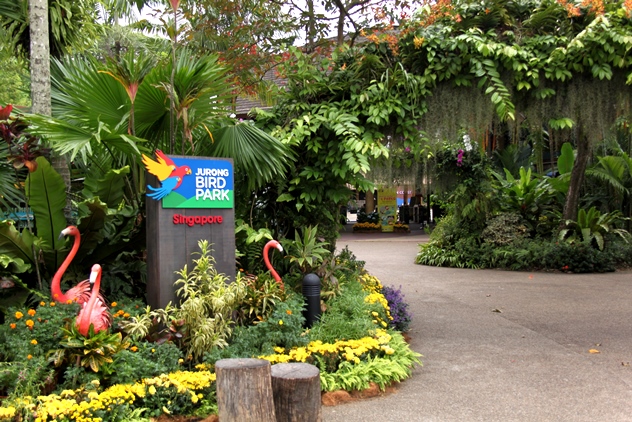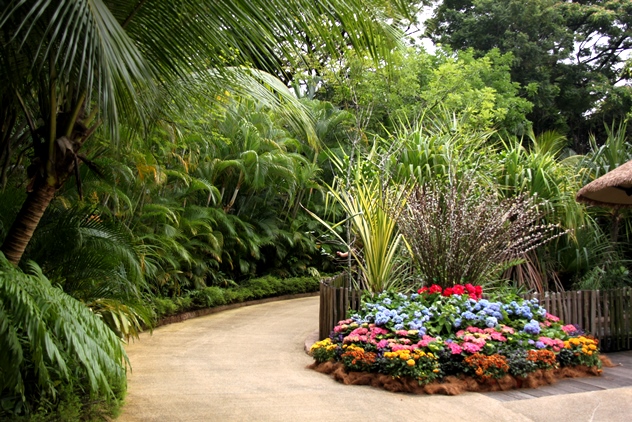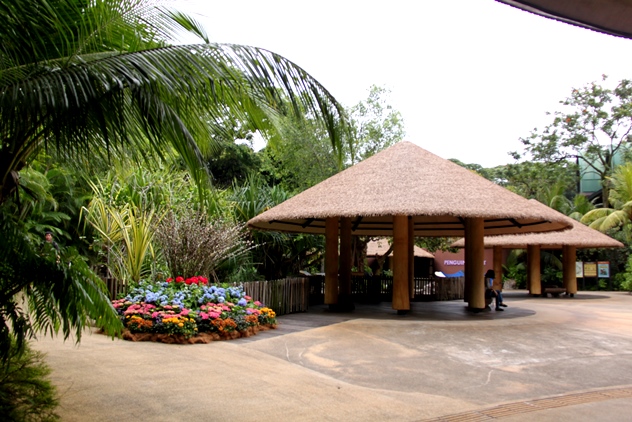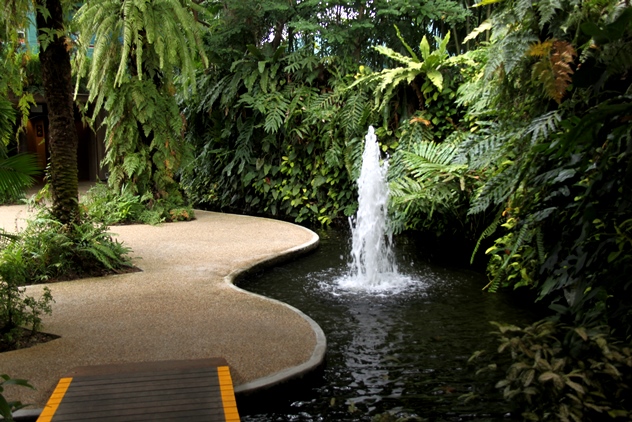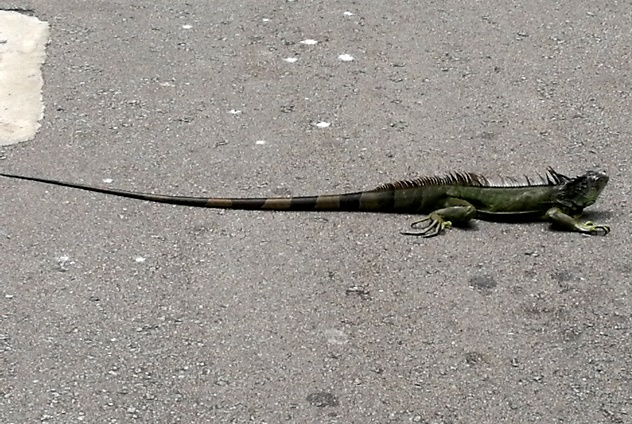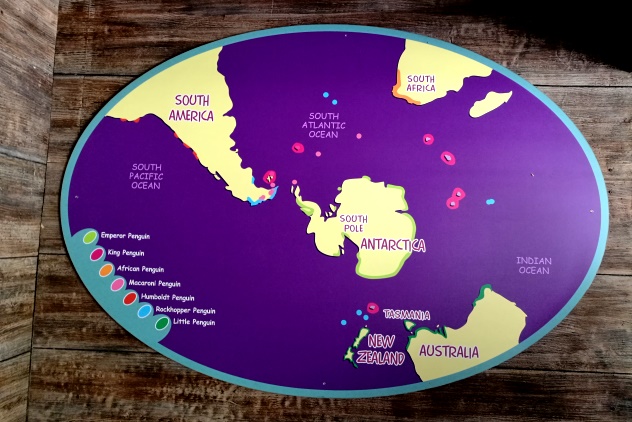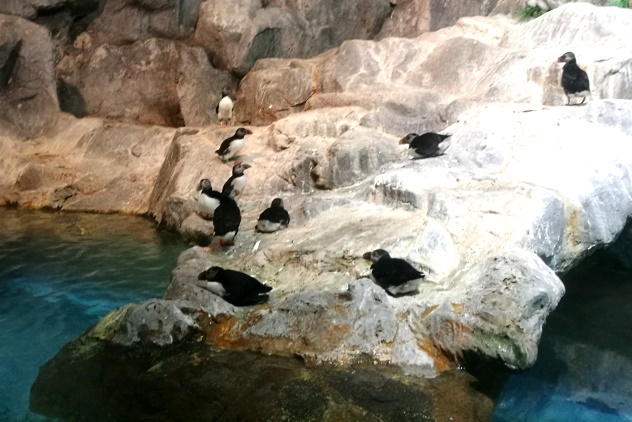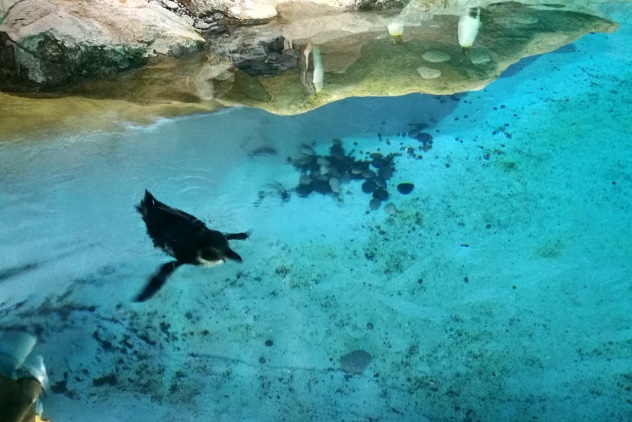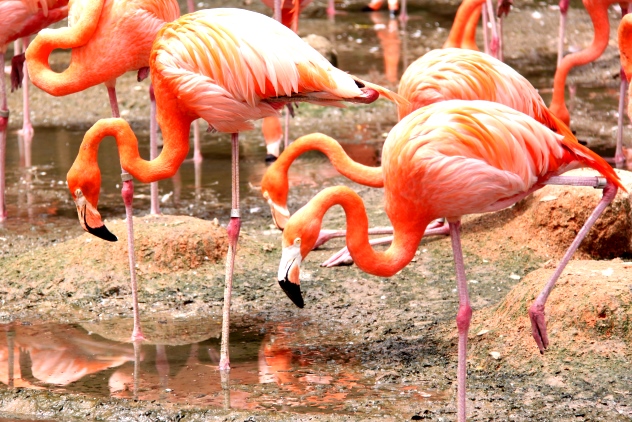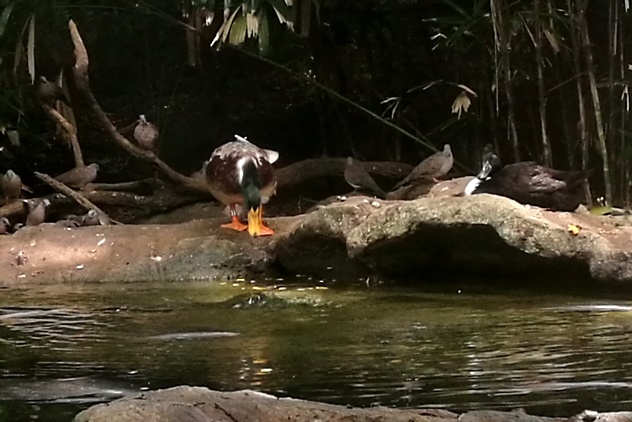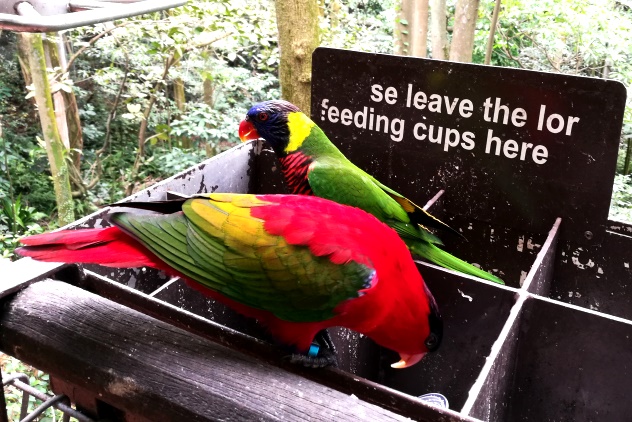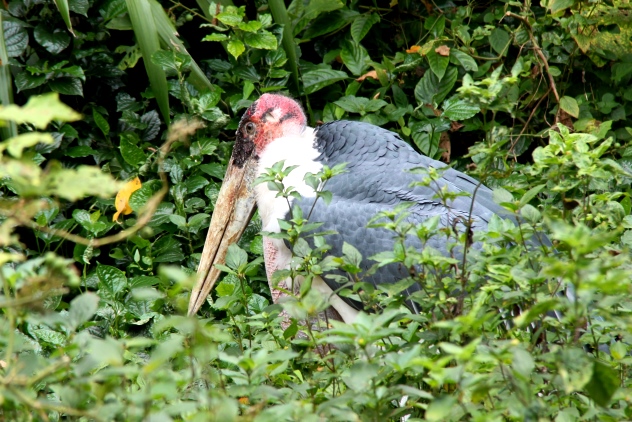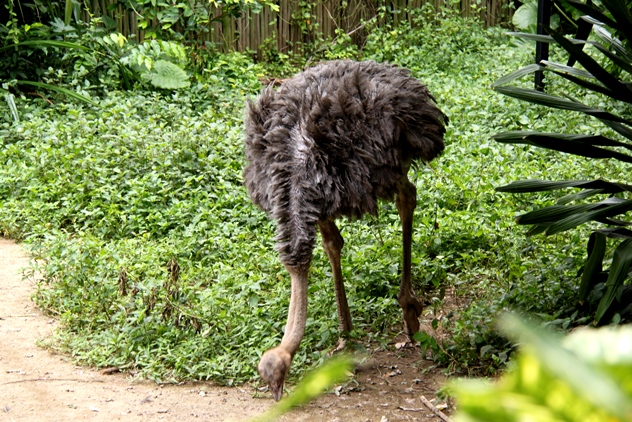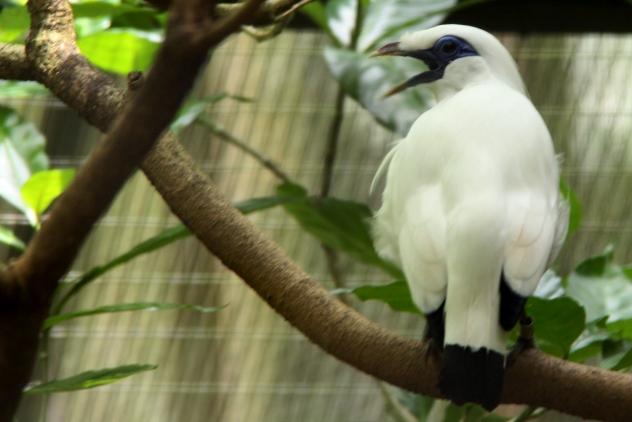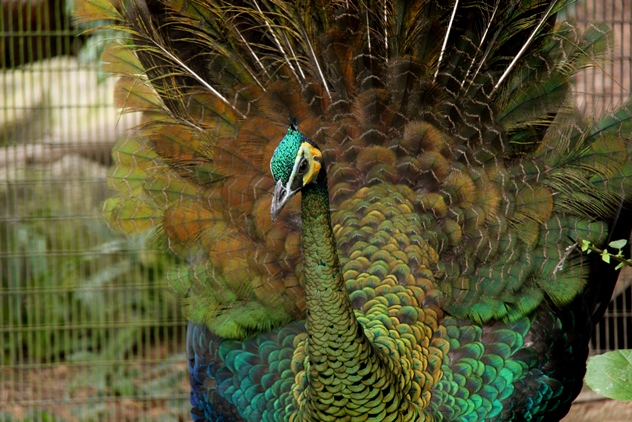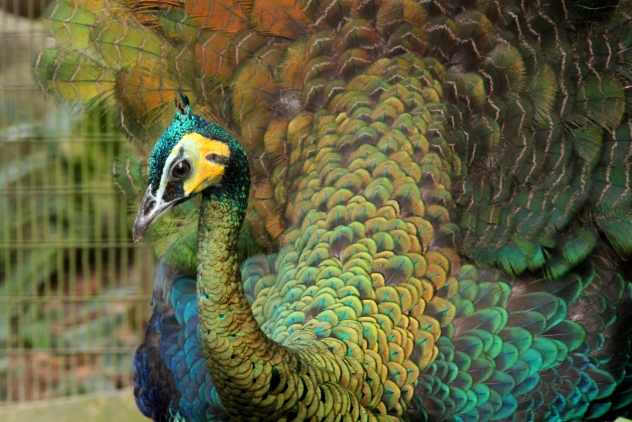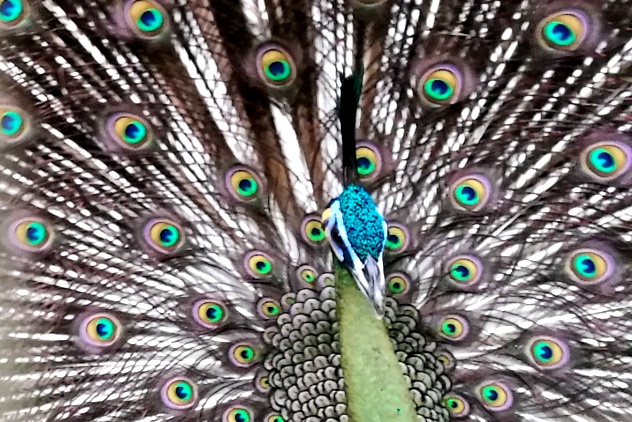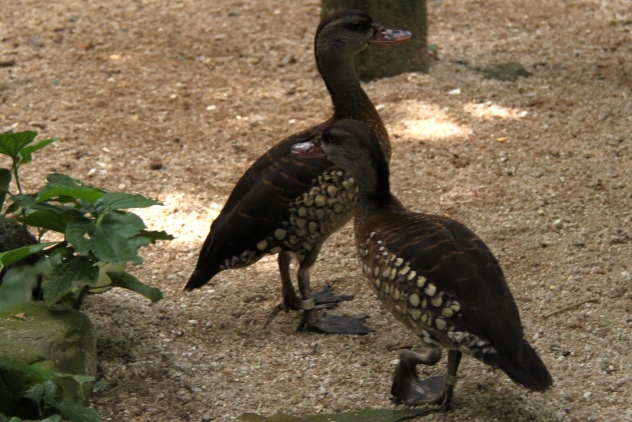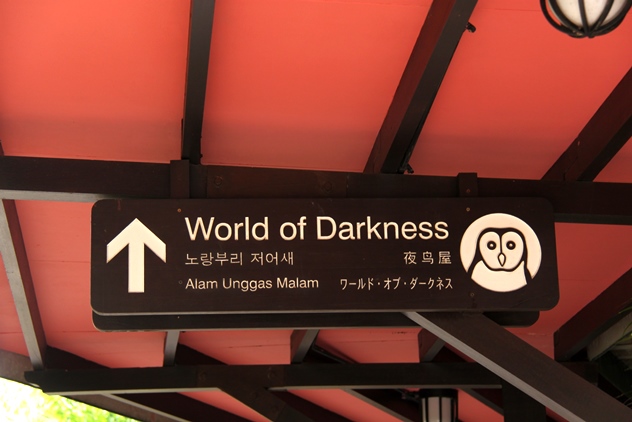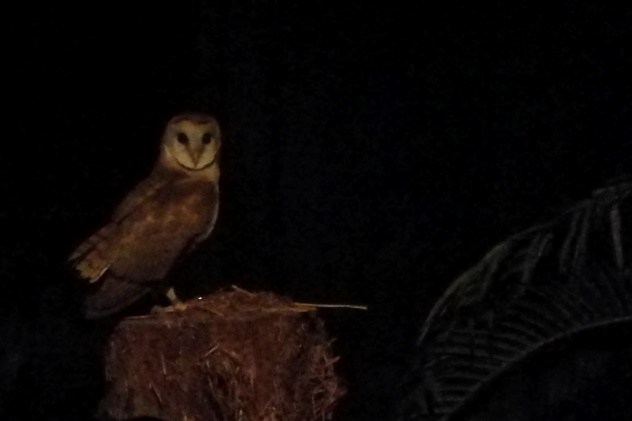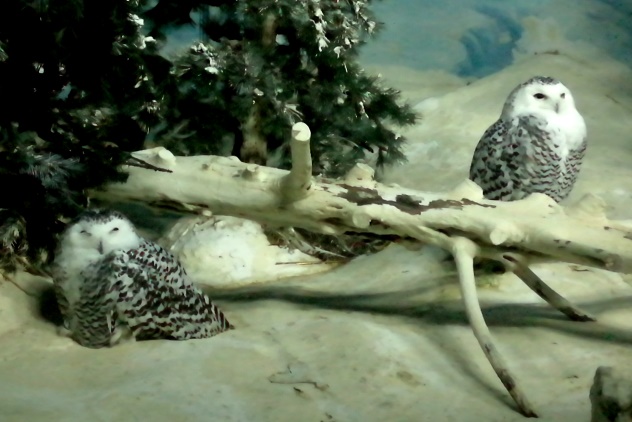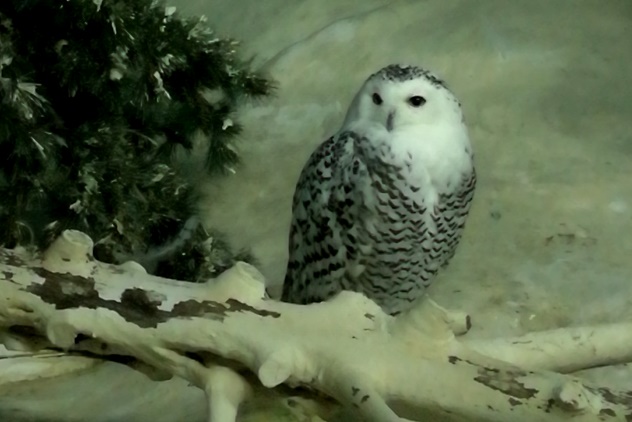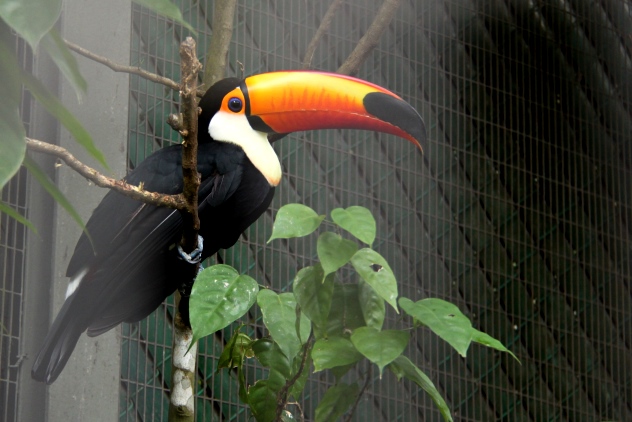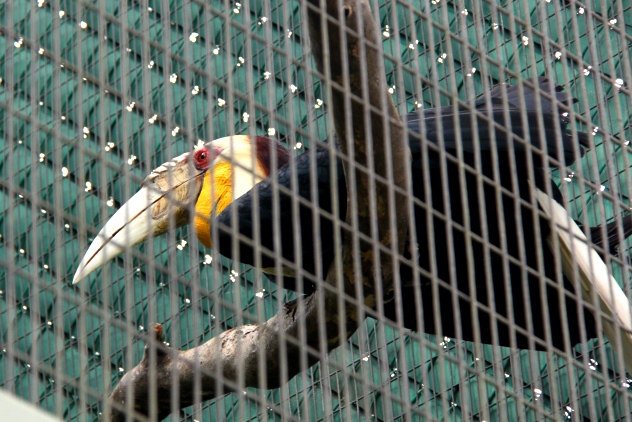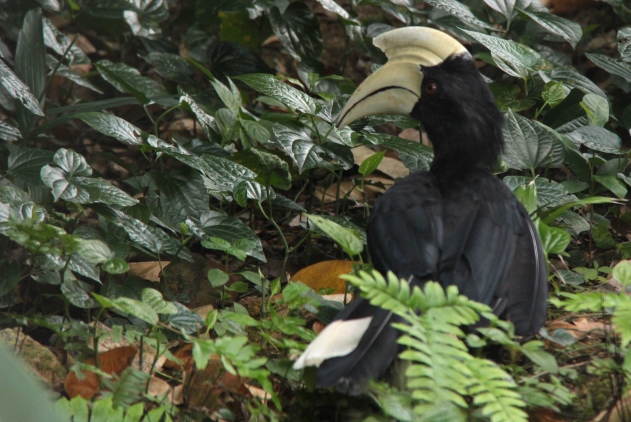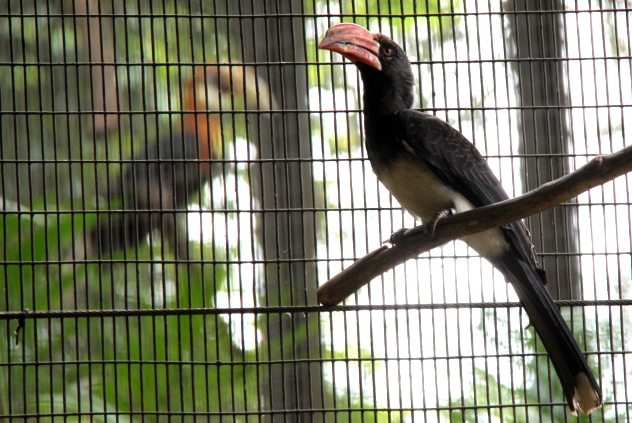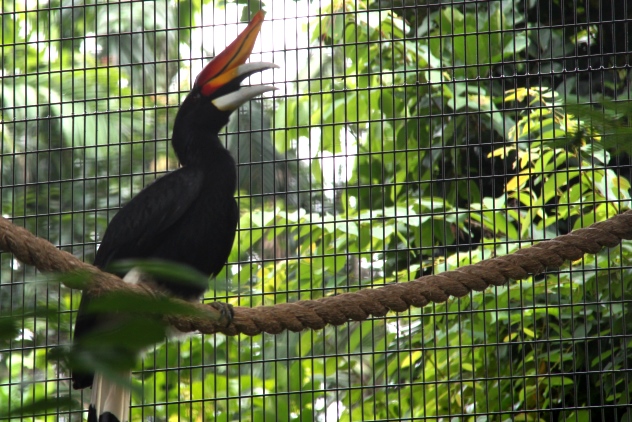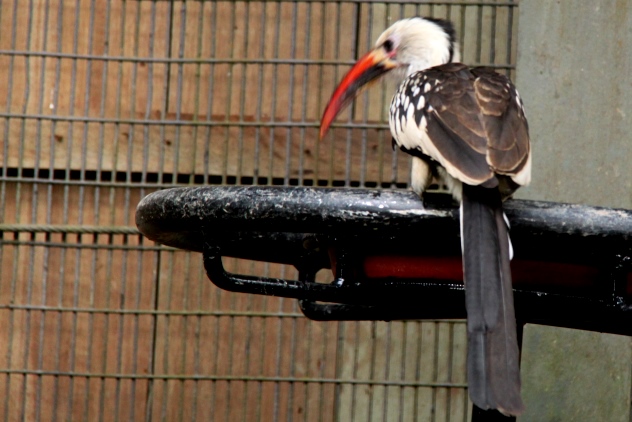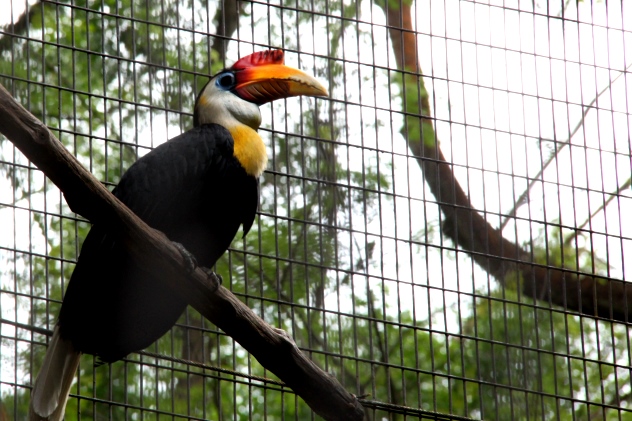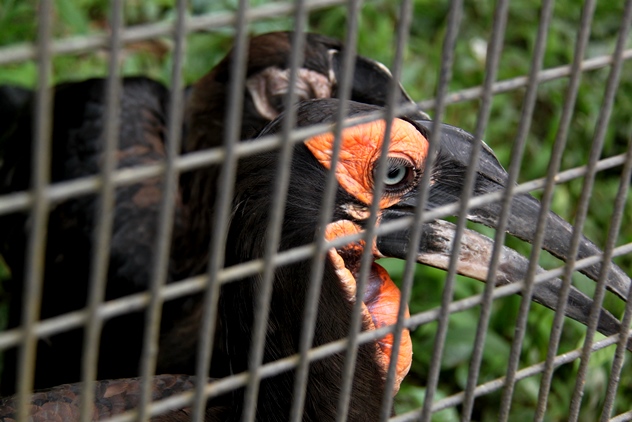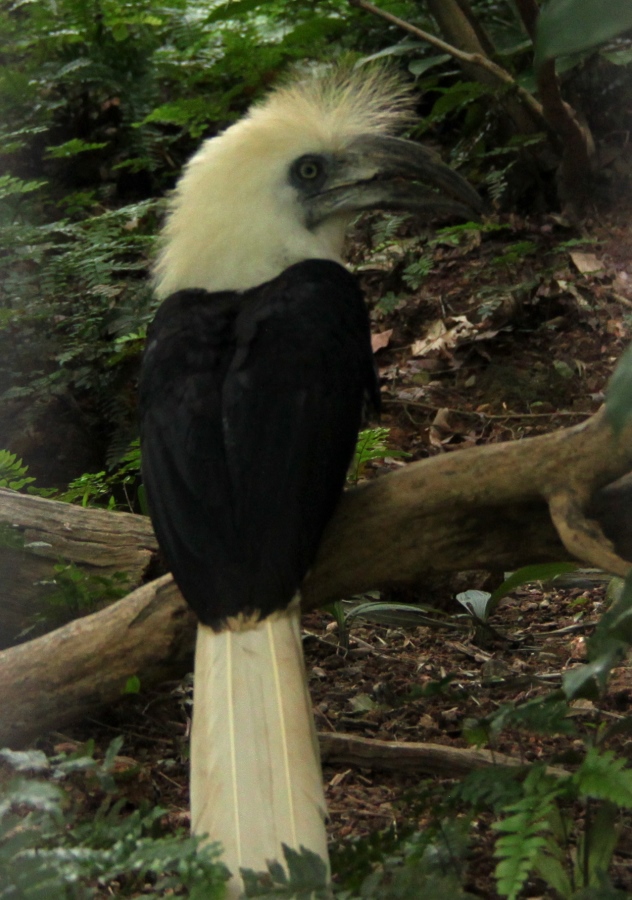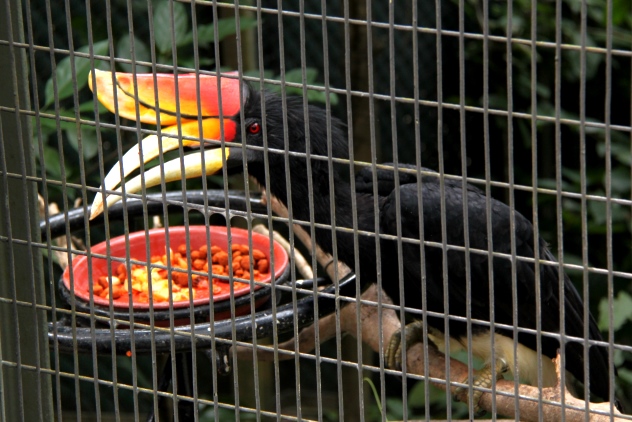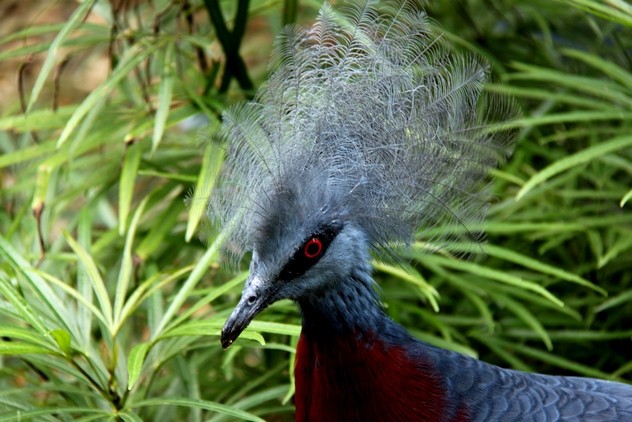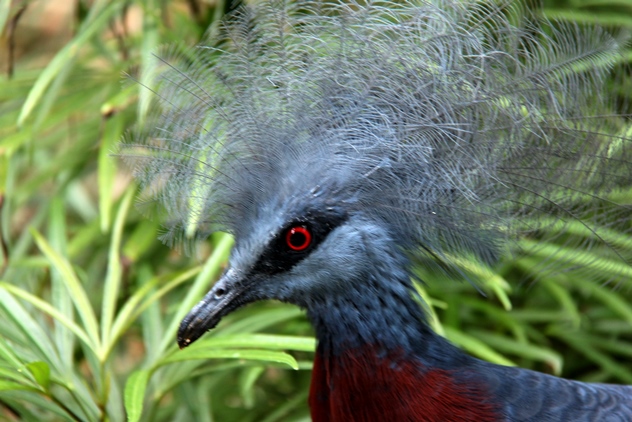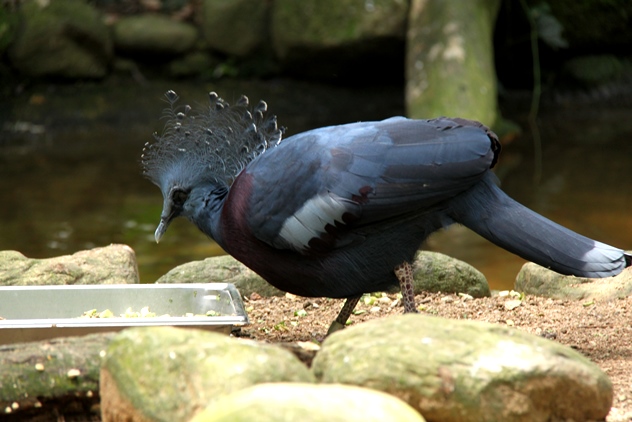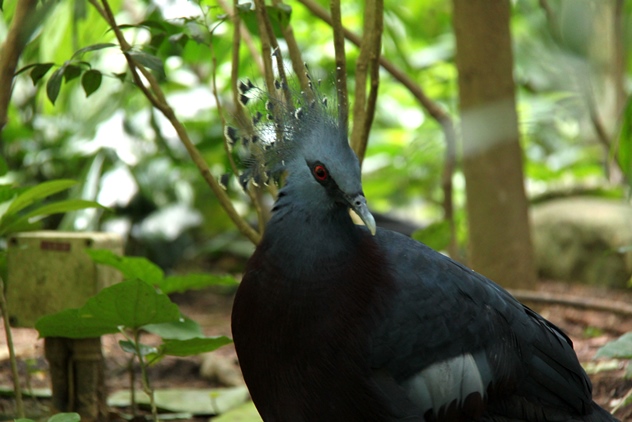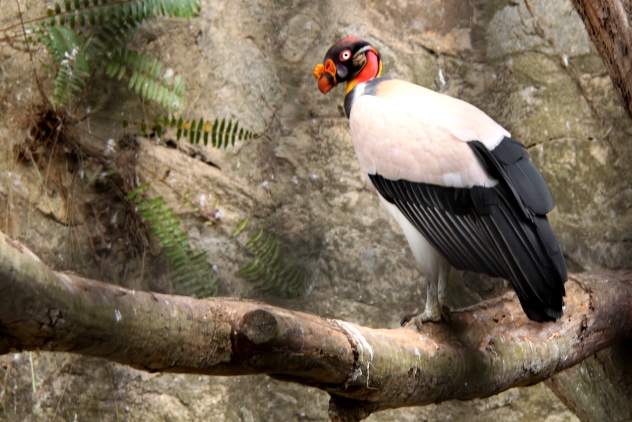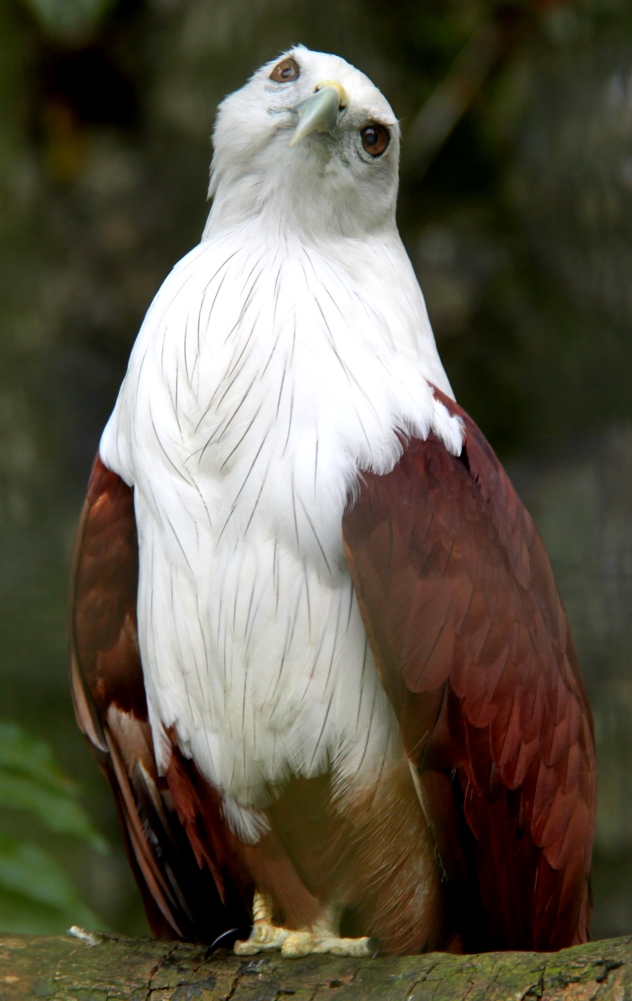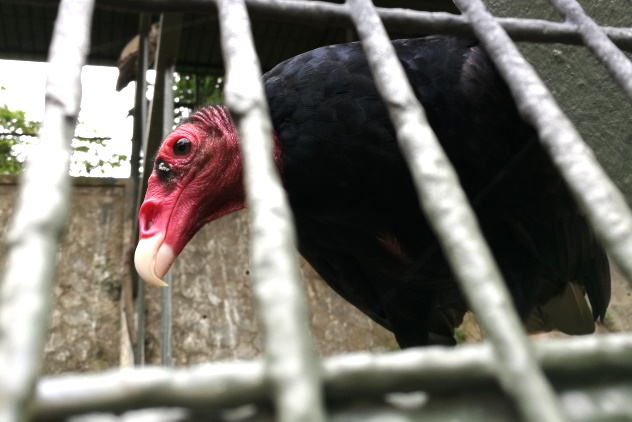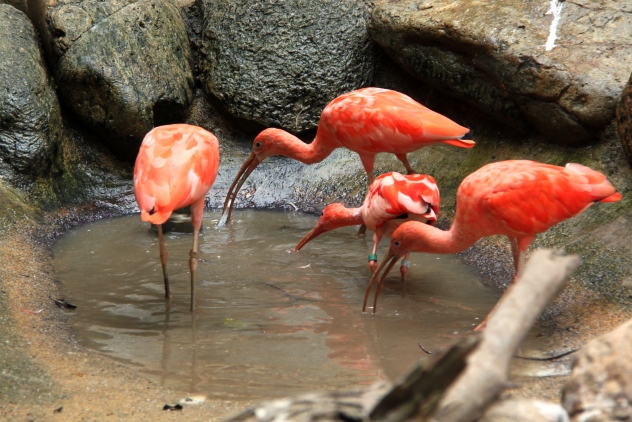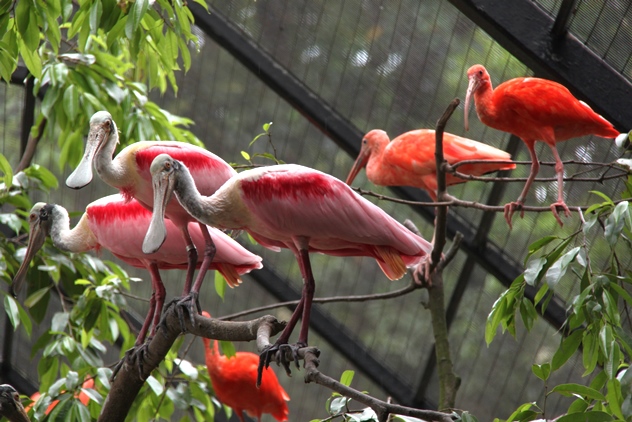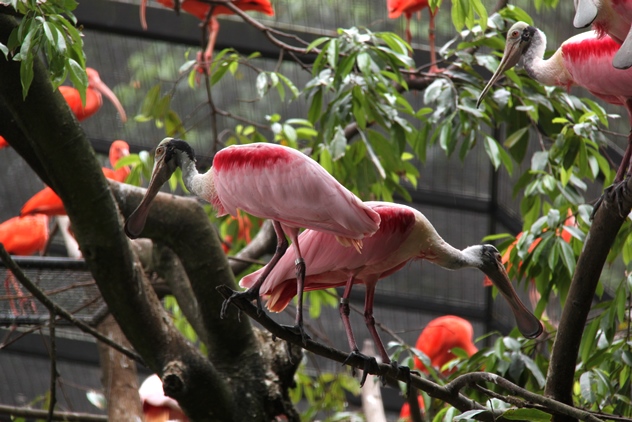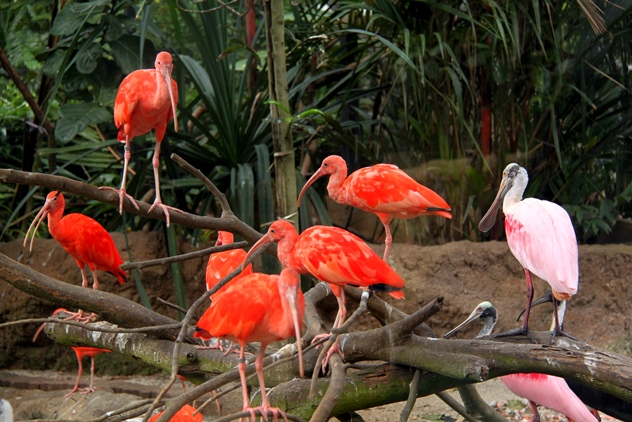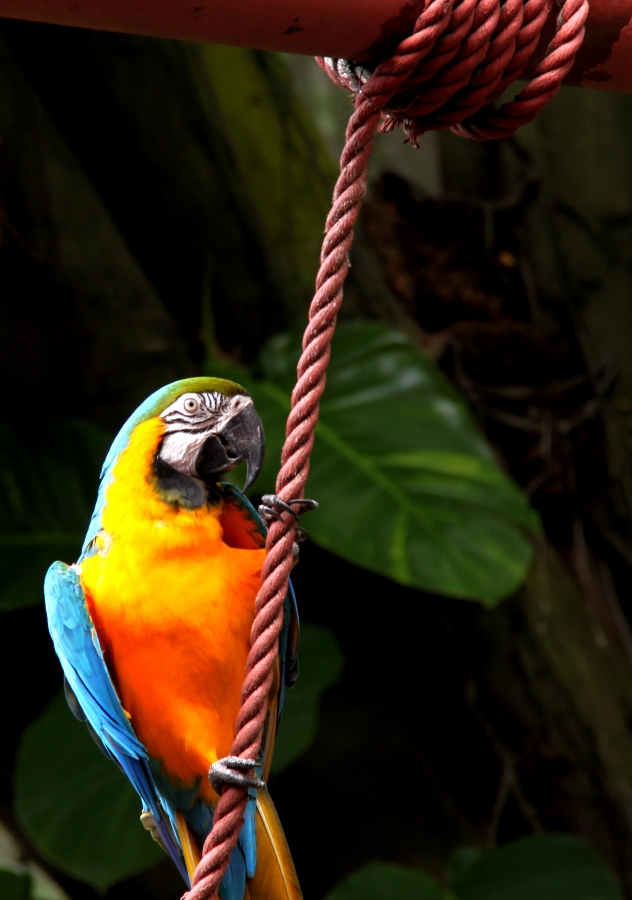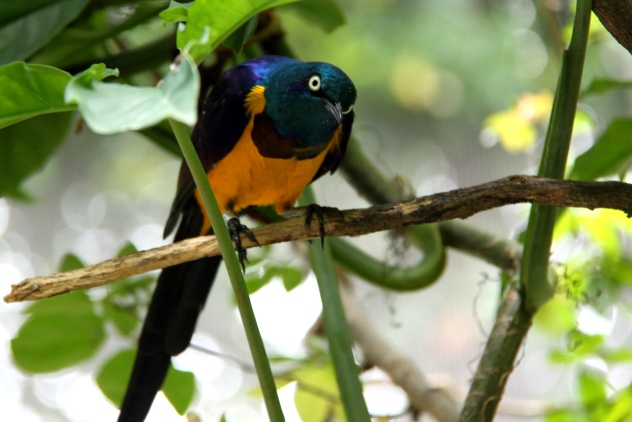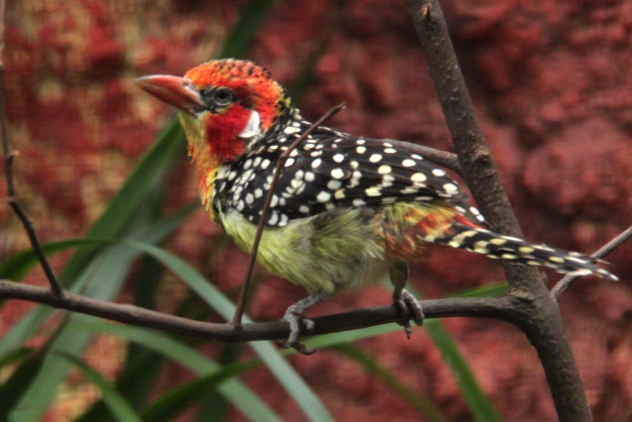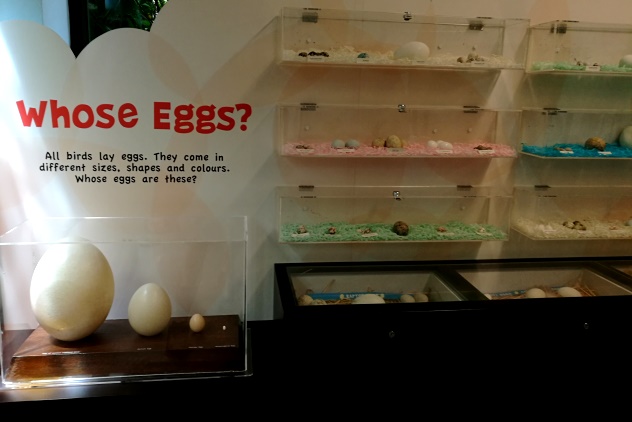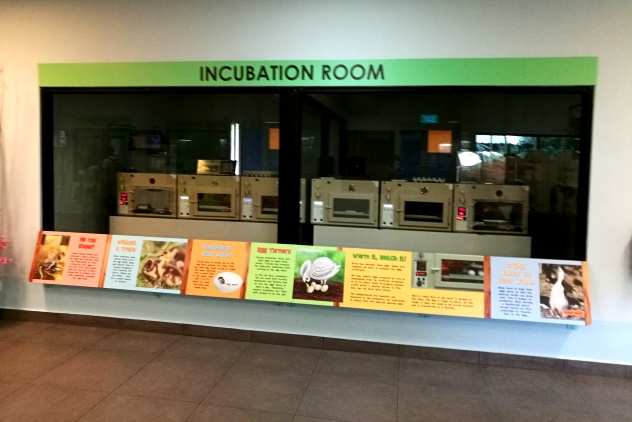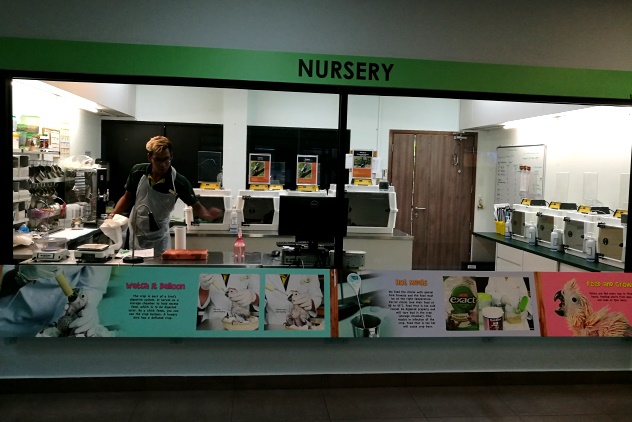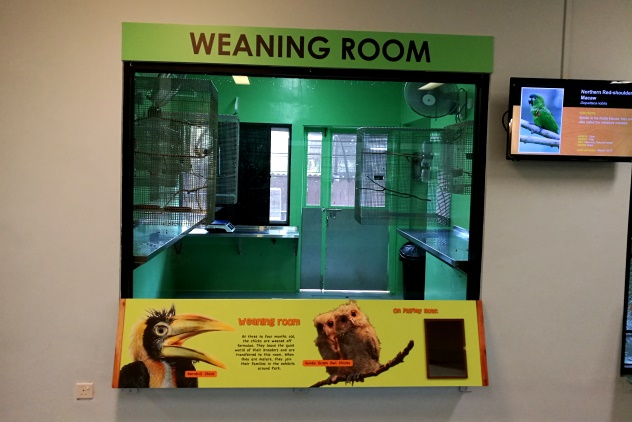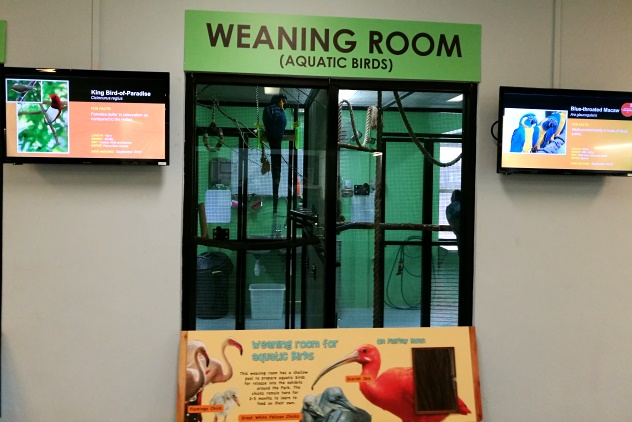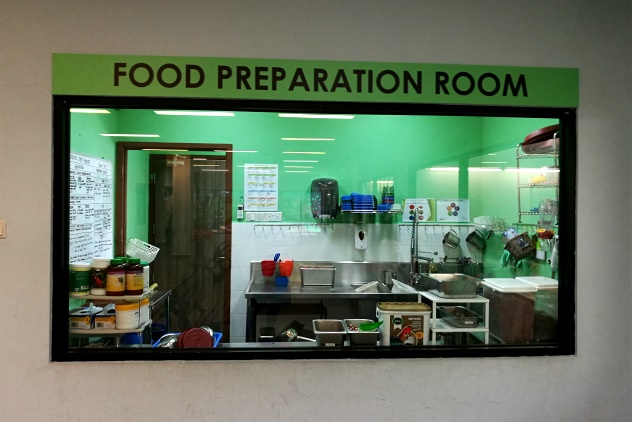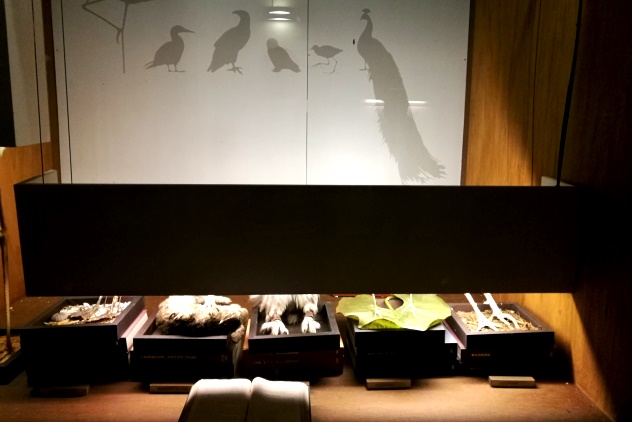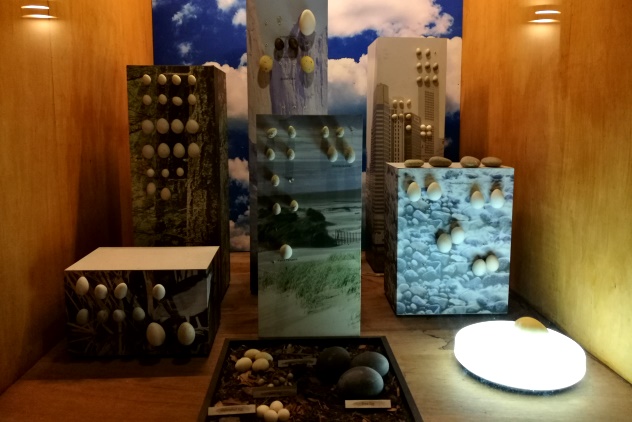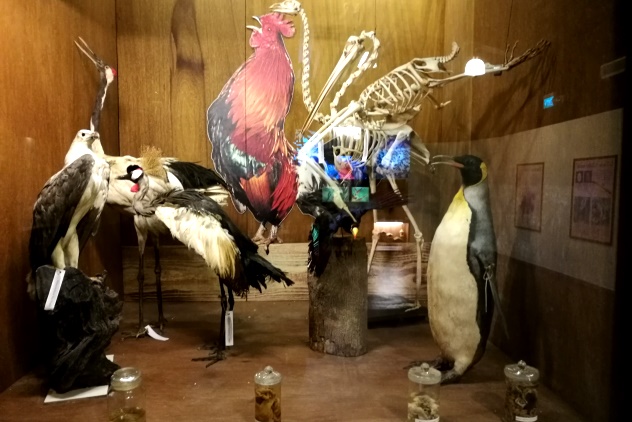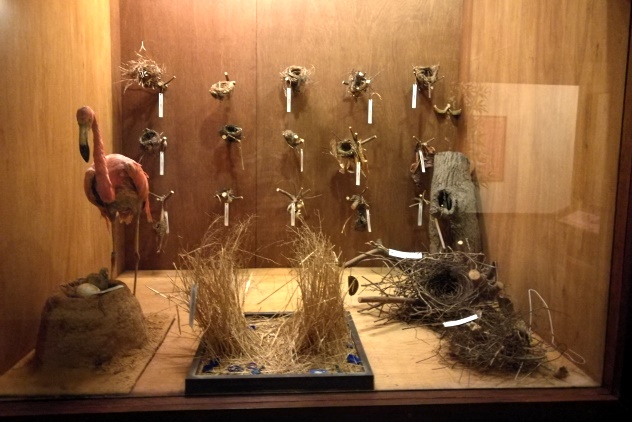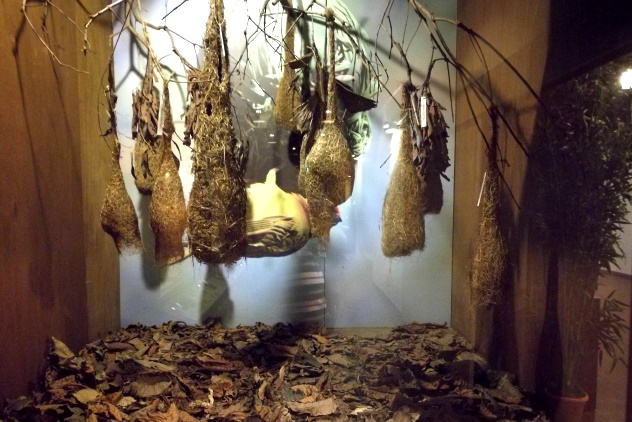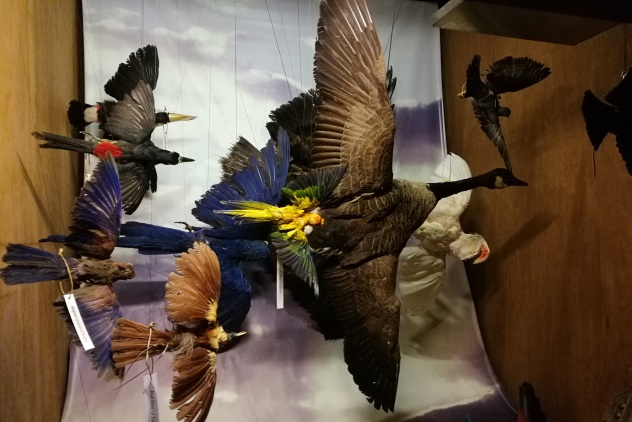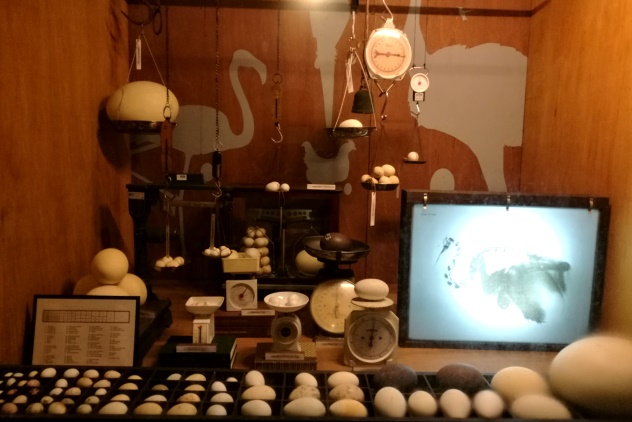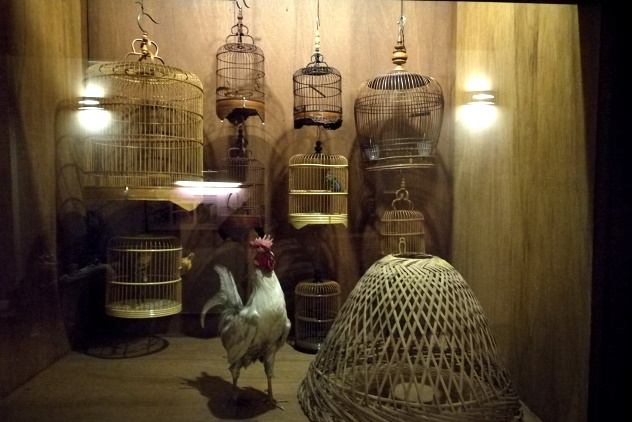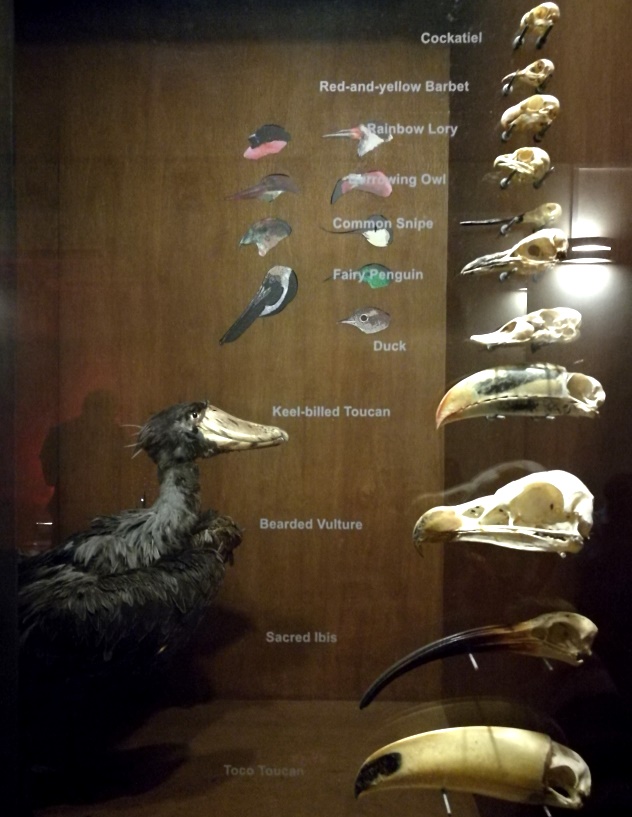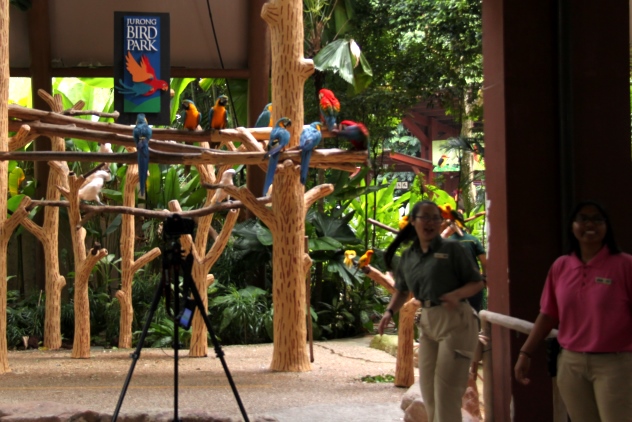On my second day in Singapore at the beginning of this month, I visited Jurong Bird Park alone while my wife and my son Leslie went shopping. A visit to the park has been on my bucket list for a few years so it felt great to be able to tick off that item on my bucket list. I bought my ticket online at a discounted rate of twenty Singapore dollars.
Opened in 1971, Jurong Bird Park is Singapore’s first wildlife park and also Asia’s largest bird park, offering a sprawling 20.2-hectare hillside haven for more than 5,000 birds across 400 species from around the world, of which 15% are threatened.
As it was still Chinese New Year, I saw Chinese New Year decorations at the park. The park has quite nice landscaping. There were quite a lot of visitors at the park.
I was walking along a road in the park when I saw a long iguana right in front of me in the middle of the road. It was not scared of me so I was able to get real close to it to take many photos of it from different angles.
I did not manage to visit every part of the huge park and I am now filled with big regret upon realising that I did not make it to Waterfall Aviary (which houses a 30-metre high waterfall reputed to be the world’s first and tallest man-made waterfall), the Swan Lake, the Parrot Paradise (which houses the largest collection of parrots in Asia) and the Pelican Cove (which houses the world’s most comprehensive collection of pelicans). I can thus only share photos taken at the places of the park that I did manage to visit.
Penguin Coast
The Penguin Coast, home to about 200 penguins across five species within its 1600 square metres. Featuring a 21-metre (69 ft) tall Portuguese galleon façade and designed to resemble a ship, the interior of Penguin Coast is constructed with timber beams and wooden flooring. The indoor, climate-controlled exhibit is home to the Humboldt, rockhopper, macaroni and the majestic king penguins. It is fascinating to watch them as they torpedo through the water and jump up from the water onto the ice. The outdoor exhibit houses the endangered African penguins, otherwise known as jackass penguins, one of the few species that has adapted to the tropics. I did not visit this outdoor exhibit as I was unaware of it so I cannot share any photos of it.
Flamingo Pool
The Flamingo Pool is home to Chilean Flamingos and Caribbean Flamingos. Often hunted for food and for traditional medicine, the Chilean Flamingo, distinguished by their white bill with a black tip, is classified as near threatened. The Caribbean flamingo is the brightest coloured in the flamingo family, with three colours on their bills – grey at the base, pink in the middle and black at the tip. It is fun to watch as they strut in style or wade through the water in search for food. I saw a few pelican among the flamingos.
Saddlebill
The saddle-billed stork (Ephippiorhynchus senegalensis) is a large wading bird in the stork family, Ciconiidae. It is a widespread species which is a resident breeder in sub-Saharan Africa. In this section of the park, I also saw a lot of Grey Crowned Cranes (Balearica regulorum) and a couple of herons as well as a big iguana.
Flamingo Lake
Flamingo Lake is home to hundreds of pink-hued Greater Flamingos and Lesser Flamingos live. I only watched them from afar as I had already seen flamingos close up at the Flamingo Pool.
Riverine
I got to see an intimate underwater view of aquatic birds, freshwater fish and turtles in this 11-metre wide simulated river habitat through a glass-viewing gallery.
Lory Loft
About nine storeys high and covering 3,000 square metres, the Lory Loft is the world’s largest lorry walk-in flight aviary featuring 15 lory species. With over 1,000 free-flying lories, the Australian outback-themed aviary features a magnificent 360-degree elevated view of the landscape. Visitors can feed and interact with the red, yellow, green and blue coloured birds as they walk across suspended bridges.
Dinosaur Descendants
This corner of the park features ratites or flightless birds that are said to be ancestors of the great dinosaur. Ostriches, marabou storks, emus, rheas and cassowaries are the residents of this exhibit. Ostriches are the world’s largest, heaviest and fastest-running bird with the biggest eyeballs and the largest eggs in the world.
Wings of Asia
This is home to a collection of over 500 birds representing 135 species of Asian birds including many Asia’s most exotic and endangered birds like the critically endangered Bali Mynah, where less than 200 are estimated to be left in the wild.
World of Darkness
When I entered the World of Darkness, I was plunged into almost total darkness. Asia’s first nocturnal bird house features a system of reverse lighting, converting day to night and vice versa. On display are 60 birds from 17 species, like the Snowy Owl, Malay Fish Owl, Eurasian Eagle Owl, Barn Owl, Spotted Wood Owl, Great Grey Owl and Boobook Owl. With binocular vision and exceptional hearing, these raptors of the night are highly specialised predators that almost never miss their prey. I was only able to capture a few of these birds on my camera as it was just too dark with only the snowy owls being kept in a reasonably bright habitat.
Hornbills & Toucans
In an area of over 2,000 square metres, this exhibit houses the largest collection of Southeast Asian Hornbills in the world, as well as a wide variety of the South American Toucans. I was only able to photograph some of these birds as they are kept in spacious and heavily forested aviaries. At some of the aviaries, I resorted to squinting my eyes as I tried to see the birds but I guessed some of the bids were pretty well-hidden among the foliage and I could not take photos of them.
Royal Ramble
Aptly named for its residents’ “noble” bearings and “rambling” style of walking, Royal Ramble houses 3 species of the world’s largest, and most handsome, pigeons – the Common Crowned Pigeon, the Victoria Crowned Pigeon and the Scheepmaker’s Crowned Pigeon in 3 separate aviaries. These birds, with their lacy crowns and elaborate plumage, are a sight to behold as they ramble on the ground.
Birds of Prey
Hawks, eagles and vultures live side by side in towering enclosures on this magnificent street of kings of the skies. These raptors have sharp talons and hooked beaks.
Wetlands
The scarlet ibis with bright red plumage are stunning. Look out also for the attractive roseate spoonbill, named for its unique spoon-shaped bill. There are many other wetland bird species like magpie geese, Mandarin ducks, night herons, wood ducks and hammerkop.
Songbird Terrace
This is where visitors can enjoy a parrot show over lunch in front of the Flamingo Lake. I did not have lunch there but I happened to be passing by when the parrot show was going on. So I stopped to watch and had a wonderful time enjoying the performances of the parrots.
Jungle Jewels
The Jungle Jewels aviary is a 2,300 sqaure metres showcase of the great diversity of birds in South America such as conures, tanagers, honeycreepers and waterfowl. In the 14-metre high aviary of cascading water and lush vegetation, I saw some small and brilliantly coloured birds but I had difficulty photographing them.
I saw a Saffron Finch on a tree branch and followed it when it flew down from the tree to a little stream when it proceeded to take a bathe. It was wonderful watching the little bird enjoying a cool bathe on a hot day.
Heliconia Walk
Jurong Bird Park holds the honour of being Asia’s first Heliconia Repository. This honour was earned when the Heliconia Society International designated the Park as an official Heliconia Collection Centre in 1989. With 167 species and cultivars of Heliconia, the Park is proud to have one of the largest collections in the region today. These unusual-looking flowering plants, native to Central and South America, New Guinea, are best known for their exotic blooms. In this part of the park are bird enclosures with many different species of softbill birds that eat nectar, fruit, insects and other such “soft” food.
The Breeding & Research Centre
The Breeding & Research Centre provides a behind-the-scenes look at the growth process of birds from incubation to weaning. It is where the incredible journey of life begins for some of the Park’s resident birds. The moment eggs arrive at the BRC, up to the time chicks hatch and are weaned, they are hand-raised by the Centre’s officers or bird nannies as they are sometimes affectionately known.
Eggs are kept snug and warm in special incubators in the incubation rooms, equipped with automatic egg turners to keep the temperature and humidity of each egg constant. This aids in the incubation process. At maximum capacity, each incubation room can hold up to 180 eggs of various species.
Upon hatching, the chicks are taken to the Nursery to be fed and looked after. The hatchlings are housed in brooders, a temperature and humidity-controlled environment, to keep them safe and warm. This is also where you can see how these adorable juveniles are fed by their “bird nannies”.
From the brooders, chicks move on to the Weaning Room when they are fully grown to help them acclimatise to the environment and each other. Here, the birds are placed in cages until they are matured and ready to join the rest of their family in the respective exhibits.
The chicks and birds are kept on a strict diet, monitored and controlled by their keepers to maintain their optimum health.
Committed towards conservation, Jurong Bird Park has successfully bred threatened species such as the Bali mynah, blue-throated macaw and other significant species such as the black palm cockatoo, hyacinth macaw, red-fronted macaw and the red-tailed black cockatoo.
The Bird Discovery Centre
Tthe Bird Discovery Centre provides a ‘living classroom’ for visitors to learn about the avian world, from the life stages of a bird to exploring how birds command mastery of the sky. I saw a replica of the 2.6-metre skeleton of what used to be the second largest bird in the world as well as dioramas relating to the avian world.
Birdz of Play
I just walked past the Birdz of Play, the bird-themed water playground with giant tipping bucket, the Flying Fox and arcade games. I did not enter this part of the park as it is meant for kids.
Photography Booth
Near the exit, I saw the parrot photography booth for visitors to take photos with parrots. I did not ask about the price for that as I had no interest of having my photos taken by the park staff.
I spent more than five hours at the park but still could not visit all the exhibits as I spent too much time taking photos. I brought along only a 500ml bottle of drinking water and I guessed that was why I got a little unwell that evening due to dehydration (it was hot and humid) and being caught in a very light drizzle towards the end of my visit. But I truly enjoyed the visit and I may visit it again in future.
 CY@CY Says Welcome to my dreamscape. Where a Lim is also a Ling.
CY@CY Says Welcome to my dreamscape. Where a Lim is also a Ling.




